Joining materials
1. Introduction
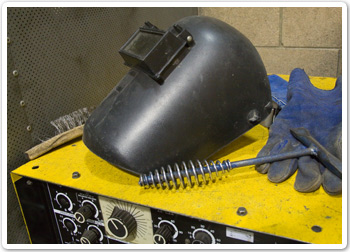
Materials can be joined using a number of methods including:
- fasteners (eg nuts, bolts, screws, etc)
- welding
- arc
- MIG
- TIG
- bronze welding.
2. Arc welding
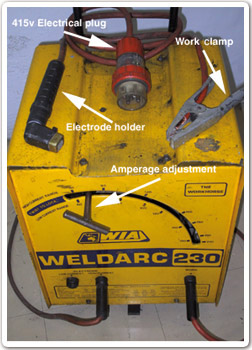
Arc welding is the process of fusing metal together by heating it with an electric current. It is achieved using an arc welding machine. These are often small in size, allowing them to be moved easily to different work sites and situations.
3. Safety equipment

When performing arc welding, you must protect your body by wearing the following equipment:
- overalls
- leather apron
- welding gloves
- work boots
- protective helmet.
The protective helmet contains lenses designed to cut glare, infra-red and ultraviolet rays.
4. Welding equipment
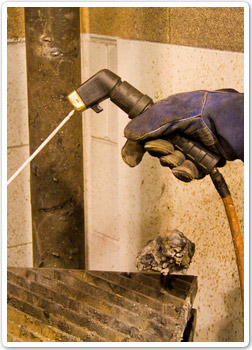
The arc welding machine consists of:
- current adjustment
- work clamp
- electrical plug
- electrode holder.
Note: It is important to select the correct electrode type and size for each job.
5. Setting the welder
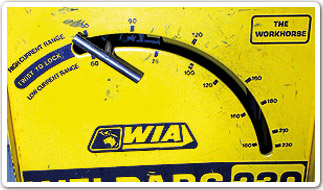
Selecting the correct current level for a weld is dependent on the thickness of metal being welded and the electrode being used. As an example, welding 3mm mild steel using a 2.5mm electrode requires a setting of 80–95 amps.
Note: Electrode packets provide advice on current range.
6. Performing the weld
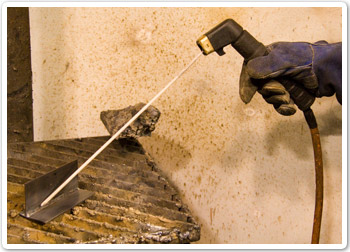
- Strike the arc by scratching the electrode onto the metal (much like striking a match).
- Hold the electrode on a 60 degree angle to the metal leaving a gap of 2–3mm between electrode and metal.
- Slowly move the electrode in the direction shown, as electrode is consumed move hand closer to metal.
It takes practice to learn this skill.
7. Completing the weld
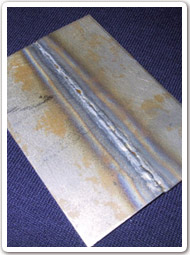
- When you have finished welding, allow the metal to cool.
- Use a chipping hammer to remove the slag, then wire brush the joint.
Note: Wear safety glasses during this process.
Shown is a completed butt weld.
8. Brazing
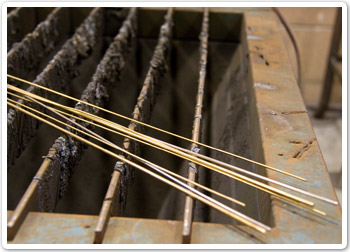
Brazing is a method of joining metals.
It joins metals not by melting the surface of the metals but by filling a gap between the metals with a molten material. The molten material (eg bronze or bronze with a high silver percentage) adheres to each metal surface, forming a join.
9. Creating heat
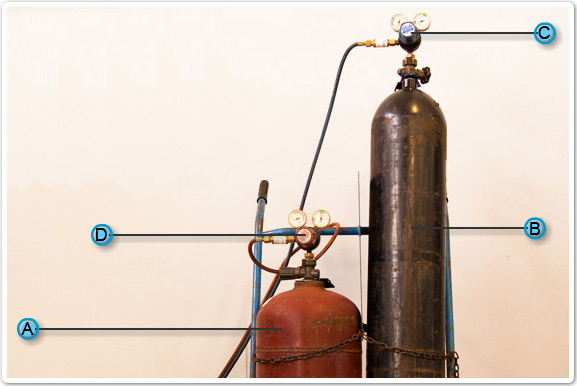
The heat required to melt the filler rod is obtained using an oxyacetylene welding plant. This plant mixes oxygen and acetylene under pressure.
Parts of the plant that are labeled in the photo are as follows:
A. Acetylene cylinder – stores acetylene gas under pressure. Maroon in colour.
B. Oxygen cylinder – stores oxygen under pressure. Black in colour.
C and D. Regulator (gauges) – reduces the pressure from cylinders to the working pressure required at the torch.
10. Welding torch

There are two valves on the torch allowing gas flow. Adjusting the flow of each gas controls gas volume, this controls the type and heat of flame produced. Different tips can be fitted to the torch.
11. Safety
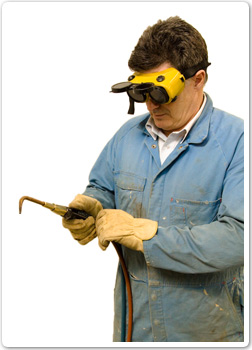
Wear appropriate clothing when brazing, this includes:
- goggles
- overalls
- gloves
- safety boots.
12. Performing brazing
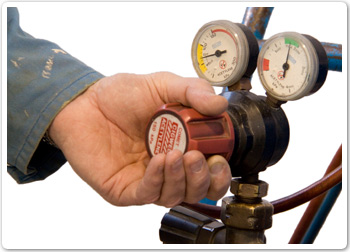
To conduct brazing requires:
- accessing the required safety equipment
- using a suitable location
- setting up the oxyacetylene plant
- choosing the appropriate filler rod for task
- performing the brazing.
13. Performing brazing
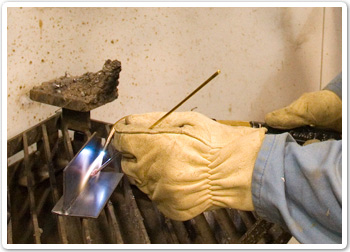
The brazing process can be broken down into steps. There is much to learn for each step including a need for many hours of practise to obtain the desired results.
Steps include:
- positioning of materials to be joined
- lighting and adjusting the flame
- running bead of weld
- extinguishing flame and closing down plant.
This completes the information on joining techniques.
Discuss with your trainer opportunities to practise welding under supervision.